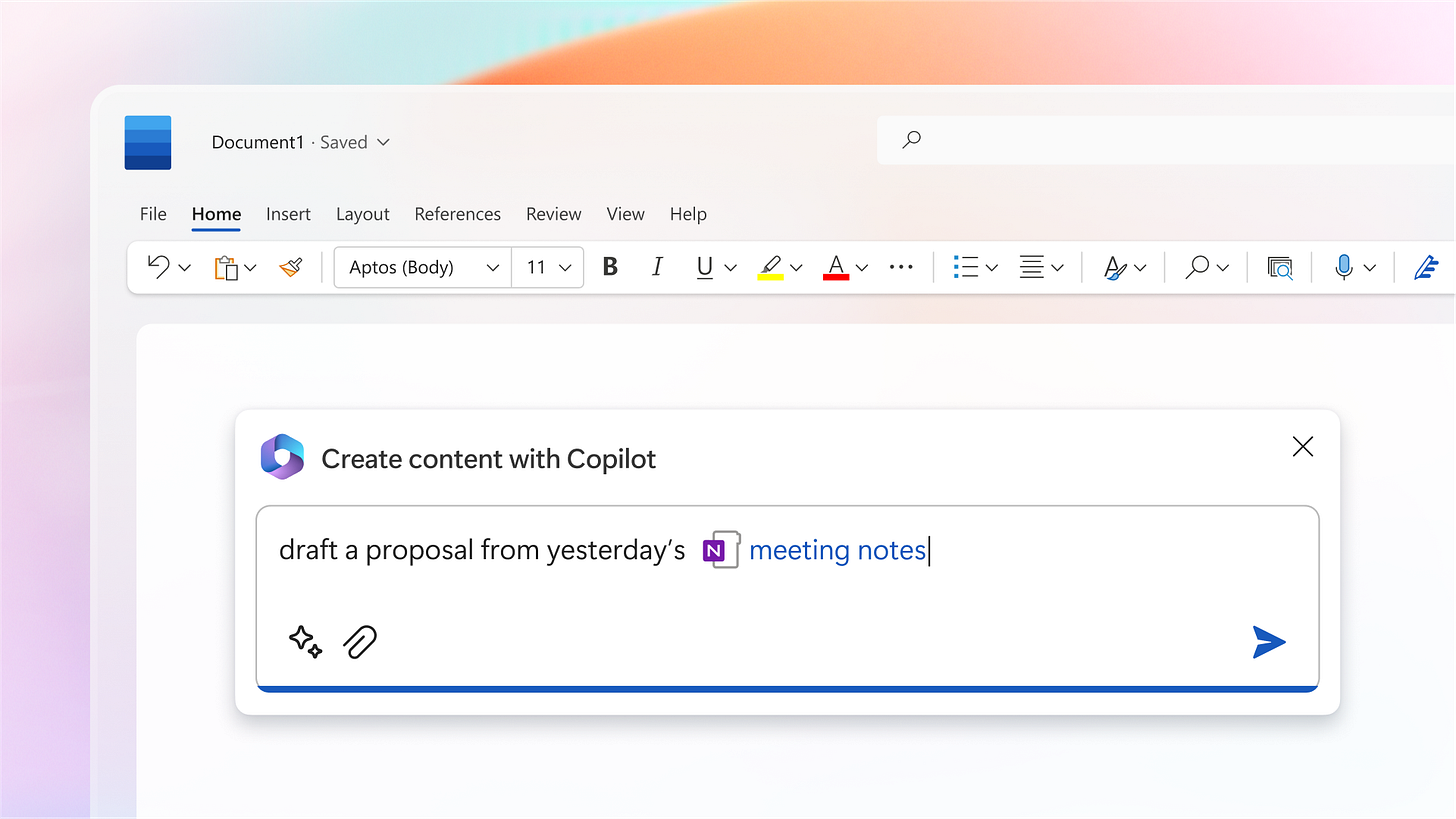GPT4 Headlines the busiest week in AI
Google and MSFT release workflow AI, new tools and fundraising make this the busiest Generative AI week of the year (thus far!)
It seems like every week the pace of the ecosystem increases. This week the GPT4 release captured most of the headlines but there was plenty going on elsewhere and competition will surely stiffen for OpenAI.
GPT 4 Release Deep Dive:
We covered the key details (including pricing!) of the GPT4 release in yesterday’s post.
Google Workspace Rolls out AI features
Google Workspace's latest release is here to revolutionize the way we collaborate and streamline everyday tasks. Google has launched a set of generative AI features in Google Workspace that aim to increase productivity and minimize repetitive, time-consuming tasks. The release includes smart canvas, live captions, and new Meet features.
Key Features of the Release:
draft, reply, summarize, and prioritize your Gmail
brainstorm, proofread, write, and rewrite in Docs
bring your creative vision to life with auto-generated images, audio, and video in Slides
go from raw data to insights and analysis via auto completion, formula generation, and contextual categorization in Sheets
generate new backgrounds and capture notes in Meet
enable workflows for getting things done in Chat
Not to be outdone - Microsoft also announces Co-pilot for office
Microsoft is launching a new tool called Microsoft 365 Copilot that is designed to help users stay focused and efficient in their work by providing personalized assistance and guidance to get things done quickly and easily.
Key Features:
- Personalized Assistance: Copilot provides personalized assistance based on your work patterns and habits to optimize your day-to-day work.
- Guided Workflows: The tool guides your work by providing step-by-step instructions and recommended tools.
- Artificial Intelligence: Copilot boasts advanced AI that helps it understand and anticipate your needs in real-time, optimizing your workflow.
- Seamless Integration: Copilot works seamlessly with Microsoft 365 applications such as Word, Excel, and PowerPoint to help users navigate each app more efficiently.
Claude Moves Forward towards launch
Built by a team of ex-OpenAI employees, Anthropic's latest model 'Claude' is here (limited release) and one of the legitimate threats to OpenAI a the premium model provider.
Key Features:
- Advanced language understanding and reasoning abilities
- Ability to learn and incorporate new information
- Can detect and resolve ambiguities in language
- High performance on language-based tasks
Midjourney V5 is here with hyper-real images (and less mangled hands!)
Midjourney continues to stay ahead of OpenAI in the image generation space. Image models tend to have more of a “default” feel so there may be room for multiple leaders in this space. Their new V5, produces breathtaking images with minimal effort.
Summary:
Midjourney V5 is a new software program that transforms images into works of art. Using advanced algorithms, Midjourney V5 corrects common issues like blurriness, color distortion, and poor lighting. The program also offers a range of filters and editing options to enhance your images even further.
See some examples of V4 vs V5 here:


Key Features:
- Advanced algorithms improve image quality
- Filters and editing options for additional customization
OpenAI Launches Evals to Leverage community for AI Model Testing
Have you ever wished for AI models to be tested in real world scenarios? OpenAI is using community involvement to make this a reality. OpenAI has launched a platform called Evals, which allows the community to contribute to AI model testing through an evaluation process. With the goal of removing biases and ensuring accurate results, Evals will enable researchers and scientists to collaborate with the public to improve AI models.
Key Features:
- Evals is a platform that enables community evaluation of AI models
- OpenAI hopes to improve model accuracy and reduce bias through crowd-sourcing evaluation
- The platform is designed for researchers and data scientists to collaborate with the public to improve AI models
Read More + Check out the Github
LLMs and SQL: Together at last?
One of the limitations of LLMs is difficulty in generating usable SQL LangChain's latest toolkit release of SQL chains seeks to make that easier.
LangChain, a blockchain development platform, has recently rolled out a new toolkit that supports building agents that create SQL.
This blog describes the progress and challenges.
Guardrails: Structuring LLM Responses
Guardrails: A New Toolkit to Address Response Structure Challenges in LLMs
While its a feature for human consumption, one of the difficulties of machine consumption of LLM responses is the lack of structure. Guardrails, a new toolkit has just been released to address this challenge! With Guardrails, developers can now easily add structure to their LLMs responses, making it quicker and easier to build systems around them.
Key Features:
- Provides guardrails for response structure
- Works with LLMs
- Easy to integrate
Developers can use Guardrails to build efficient systems around LLMs, test and debug systems, and also ensure a better user experience.
Try out many LLMs beyond OpenAI
Nat, has launched a new UI toolkit to compare language models. The tool is designed to make comparison between different NLP models simpler and faster.
Key Features:
- User-friendly interface for easy comparison between models
- Supports different text inputs, including plain text and JSON
- Provides detailed comparison graphs and metrics, including precision and recall
- Works with various state-of-the-art models, including BERT and XLM-Roberta
Generative Post produced by Gen AI Partners






